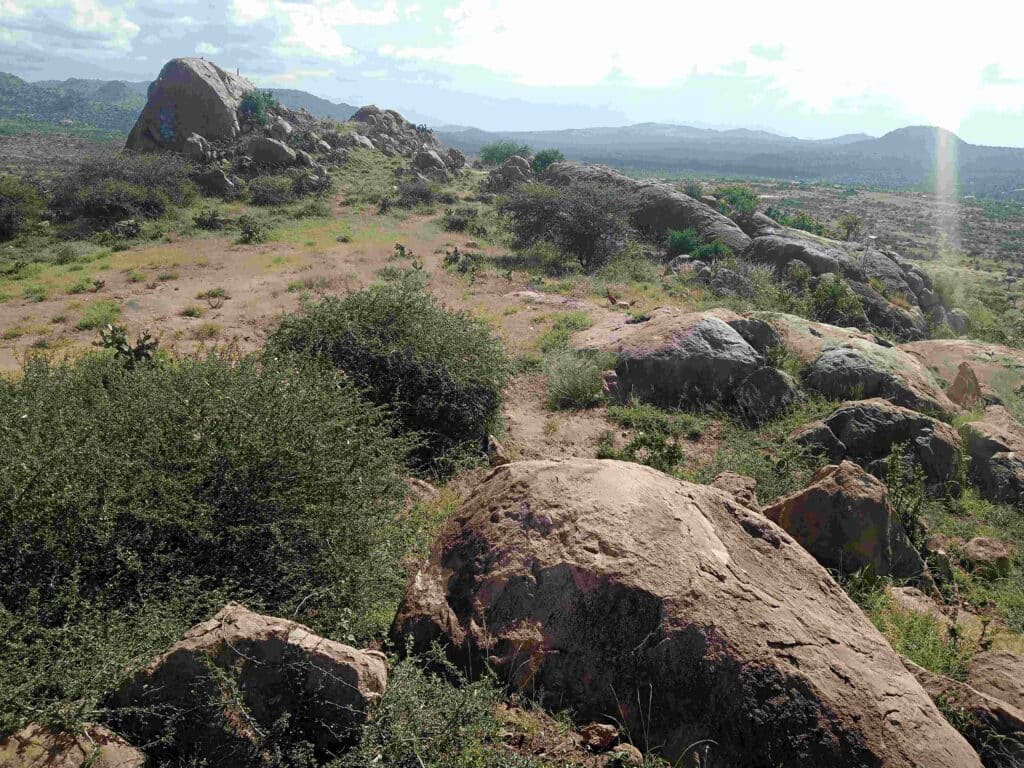
In the heart of Laikipia, where the whispers of time intertwine with the echoes of tradition, stands a silent sentinel of history: Endonyo e Pisha, the Hill of Photos. This storied landmark, shrouded in the enigmatic allure of bygone eras, bears witness to a tapestry of moments that have woven the fabric of its name and legacy.
The genesis of the name “Endonyo e Pisha” traces its roots to a transformative epoch in Kenya’s history, a time that marked the dawn of independence and the convergence of cultures against the backdrop of the rolling Laikipia landscape. It was a period spanning from the early 1960s to the 1980s, a time when the echoes of colonialism still reverberated through the annals of the nation’s narrative.
During this pivotal era, Faro Tititi Olemeshami assumed the mantle of leadership as the chairman of Mukogodo West Ward, casting a guiding light upon the community that called this land their home. The lsieuri age set, in their revered capacity as Moran’s, stood as custodians of tradition and guardians of the community’s heritage, their footsteps echoing the timeless rhythms of their forebears.
Amidst this transformative landscape, the legacy of Endonyo e Pisha began to unfold, entwined with the echoes of British colonialism and the convergence of diverse cultures. It was here, upon the sacred soil of the hill, that the colonial powers, who had once held sway over the destiny of the nation, came to pay homage to their sovereign, Queen Elizabeth.
The hill bore witness to a spectacle of grandeur as the colonialists, adorned in their regalia, mounted their flags and performed ceremonial parades, their rituals intertwined with the ancient earth of Laikipia. The resplendent pageantry that unfolded upon the hill’s crest was a testament to the enduring legacies of history, a fleeting echo of a bygone era that lingered in the whispers of the wind.

Moreover, Endonyo e Pisha beckoned to a diverse array of visitors, drawn to the enigmatic allure of the Laikipia Maasai culture that flourished in its shadow. Tourists, captivated by the vibrancy of the local traditions, ventured to the hill to partake in the timeless dances, construct Manyattas, and capture the essence of the community through the lens of their cameras.
The spirited dances of the ancient Maasai morans intertwined with the laughter of the visitors, creating a melange of cultural exchange that transcended language and custom. The hill became a living canvas upon which the threads of tradition and modernity converged, each visitor carrying with them the indelible memories of their encounters with the resilient spirit of the Laikipia community.
As the tourists departed, their hearts filled with the echoes of the hill’s resplendent heritage, they carried with them more than mere photographs. They carried with them the echoes of the ancient songs of the Maasai morans, the laughter that had danced upon the wind, and the enduring spirit of a community that had opened its heart to the world.
The name “Endonyo e Pisha,” steeped in the rich tapestry of these encounters, found its genesis in the heritage of the hill, encapsulating the essence of these transformative moments. It became a testament to the enduring legacy of the hill, a name that whispered of the marvels that had unfolded upon its ageless slopes.
In the wake of these encounters, the echoes of Endonyo e Pisha reverberated through the ages, carrying with them the poignant resonance of a hill that had borne witness to the convergence of history, tradition, and the resilient spirit of a community that had embraced the world with open arms.

As the sun cast its golden gaze upon the timeless earth of Laikipia, Endonyo e Pisha remained a silent sentinel, cradling within its embrace the echoes of a bygone era and the enduring legacies of a community that had etched its name upon the tapestry of time. It stood as a testament to the power of cultural exchange, the resilience of tradition, and the indomitable spirit of a people who had welcomed the world to their doorstep.




